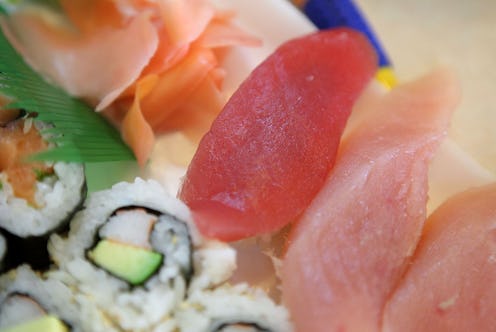News
How Do You Know If Your Sushi Has Salmonella?
As popular as California rolls and spicy tuna are, an outbreak of salmonella in sushi has made 53 people in nine states get sick. So, how do you know if sushi has salmonella? The Centers for Disease Control and Prevention has not determined a specific brand of supplier to blame yet and offers no guidance for retailers and restaurants. However, there are a few ways to avoid the stricken sushi.
Salmonella is the most common kind of food poisoning in the United States, but you cannot tell whether food has it just by looking at it or smelling it. However, you can avoid outbreaks by making sure you don't eat the food if you are in an afflicted area. You can also prevent getting salmonella by buying and cooking fish properly.
Interviews conducted by the CDC have suggested that the cause of the outbreak was sushi prepared with raw tuna. If you must eat sushi right now, try to avoid the tuna. Fish in natural environments do not usually carry salmonella, but fish used for sushi aren't always caught in natural environments; some — especially salmon — come from fish farms, according to the Chicago Tribune. Plus, salmonella can also come from improper handling.
California residents are more likely to be affected, according to the CDC, as 31 of the 53 cases have been linked to that state. Arizona had 10, New Mexico had six, and Illinois, Mississippi, South Dakota, Virginia, Washington, and Wisconsin each had one.
Seafood lovers can eat safely by making sure they are buying or eating fish that hasn't gone bad. According to the Food and Drug Administration, fish should smell fresh, not "fishy" or sour. The flesh should be firm, shiny, and translucent. It should spring back when pressed and be free from a milky slime. If you're in a restaurant and able to see the external part of the fish, check to see if it meets these criteria. Always check packaging for information on refrigeration and expiration if buying sushi or seafood from a store. The FDA provides more information on how to buy and prepare more specific kinds of seafood.
According to the FDA, it's always safer to eat fish that has already been cooked, but when eating raw seafood, it's better to consume it after it has already been frozen. A freezer can kill some parasites, but know that it won't annihilate all of them. According to The New York Times, 50 to 60 percent of sushi served in the United States has been frozen at some point.
Young children, older adults, pregnant women, people with weak immune systems, and people with decreased stomach acidity are at the most risk and should take special care when choosing whether to eat seafood, according to the FDA. It's also a good idea to check from which bodies of water your fish comes and whether the fish caught from that area are safe to eat. Seachoice.org offers a search engine and ranking system to help you pick out environmentally sound seafood.
People infected with salmonella generally experience diarrhea, fever, and abdominal cramps 12 to 72 hours after consuming the compromised product. It usually lasts four to seven days, and most patients recover without any treatment. To report a foodborne illness, visit the CDC's Investigating Outbreaks page.
Images: Getty Images (2)
